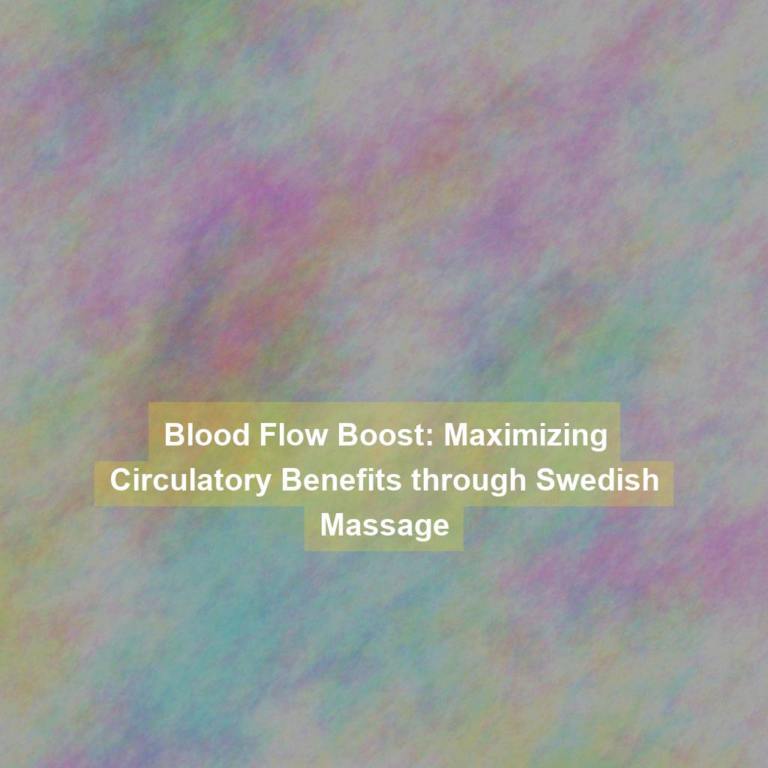Feeling like you’re running on empty? They say that all work and no play makes Jack a dull boy, and it’s true – sometimes, you just need to hit the pause button and recharge.
But how? Well, have you ever considered the deeply relaxing and rejuvenating benefits of Swedish massage? This time-honored practice is not just about a luxurious spa day; it’s a way to truly unwind and rejuvenate your mind and body.
So, if you’re curious about how Swedish massage techniques can help you achieve deep relaxation, stick around for the next few minutes.
History of Swedish Massage
The history of Swedish massage can be traced back to the early 19th century when it was developed by Per Henrik Ling, a Swedish physiologist and fencing master. Ling combined his knowledge of physiology and anatomy with his expertise in fencing to create a system of movements that formed the foundation of Swedish massage. His techniques focused on increasing blood circulation, relieving muscle tension, and promoting overall relaxation.
Ling’s methods gained recognition and popularity not only in Sweden but also internationally. In the 1850s, two of Ling’s students introduced Swedish massage to the United States, where it was further developed and integrated into various health practices.
The term ‘Swedish massage’ was coined by the Dutch practitioner Johan Georg Mezger in the 19th century. Mezger used Ling’s techniques and developed a system that included five basic strokes, which are still fundamental to Swedish massage today.
The historical development of Swedish massage laid the groundwork for its widespread use and recognition as an effective therapeutic practice for promoting relaxation and overall well-being.
Key Principles of Swedish Massage
Developed by Per Henrik Ling in the early 19th century, Swedish massage is based on key principles that focus on enhancing blood circulation, relieving muscle tension, and promoting overall relaxation.
The first principle is effleurage, which involves long, gliding strokes that help warm up the muscle tissue and improve circulation. This technique sets the foundation for the massage and helps prepare the body for deeper work.
The second principle, petrissage, consists of kneading and lifting the muscles, which can help release tension and improve flexibility.
Another key principle is friction, where the therapist applies deep pressure and circular movements to target specific muscle fibers and break down adhesions.
Tapotement, the fourth principle, involves rhythmic tapping or percussion movements that can invigorate the muscles and awaken the body.
Lastly, the principle of vibration includes the therapist using a fine, rapid shaking movement to soothe and relax the muscles.
These key principles form the basis of Swedish massage, creating a therapeutic experience that promotes deep relaxation and revitalization.
Basic Swedish Massage Techniques
To execute basic Swedish massage techniques effectively, focus on using long, gliding strokes during effleurage to warm up the muscle tissue and improve circulation. Begin by applying light pressure with your palms in a smooth, continuous motion, moving towards the heart to enhance blood flow.
Next, incorporate petrissage by gently kneading the muscles in a squeezing motion to release tension and promote relaxation. Use your fingertips or knuckles to perform circular motions on specific areas that require extra attention, such as knots or tight muscles. This technique helps to break down adhesions and improve flexibility.
Additionally, utilize tapotement by employing light, rhythmic tapping or percussion movements to invigorate the muscles and energize the body.
Benefits of Swedish Massage
As you experience a Swedish massage, your muscles will relax, blood circulation will improve, and stress will melt away, leaving you feeling rejuvenated and refreshed. The benefits of Swedish massage extend beyond just the immediate feelings of relaxation. The long, gliding strokes help to release muscle tension and knots, promoting better flexibility and range of motion. This can be particularly beneficial for individuals who suffer from chronic muscle tension or stiffness.
Additionally, the improved blood circulation resulting from Swedish massage can have a range of positive effects on the body. Better circulation means that oxygen and nutrients are more efficiently delivered to the body’s tissues and organs, aiding in overall health and wellness. It can also help to flush out toxins and reduce swelling in the body.
Furthermore, Swedish massage has been shown to have a positive impact on mental well-being. The release of endorphins during the massage can help alleviate feelings of anxiety and depression, promoting a more positive outlook and improved mood. Overall, the benefits of Swedish massage contribute to a holistic sense of well-being, making it an excellent choice for those seeking deep relaxation and rejuvenation.
Incorporating Swedish Massage Into Your Routine
Considering adding Swedish massage to your routine? It’s a great idea!
To start incorporating Swedish massage into your routine, begin by scheduling regular sessions with a licensed massage therapist. Whether it’s once a month or every few weeks, setting a consistent schedule will help you make the most of the benefits.
Additionally, consider incorporating self-massage techniques at home between sessions. This can include using a foam roller or tennis ball to relieve muscle tension.
Another way to integrate Swedish massage into your routine is to practice deep breathing and relaxation techniques during your sessions. This can help enhance the overall experience and promote a sense of calm and well-being.
Lastly, communicate openly with your massage therapist about your specific needs and goals. This will ensure that each session is tailored to address your individual concerns, whether it’s stress relief, muscle tension, or overall relaxation.
Conclusion
So, now you have the knowledge and techniques to incorporate Swedish massage into your relaxation routine.
Take some time to unwind and recharge your mind and body with the soothing benefits of Swedish massage.
Whether you choose to visit a professional massage therapist or practice self-massage at home, this ancient technique can help you reduce stress, relieve muscle tension, and achieve deep relaxation.
Enjoy the calming effects and make Swedish massage a regular part of your wellness routine.







